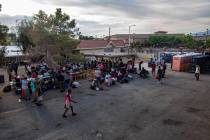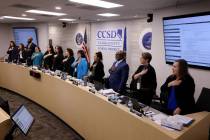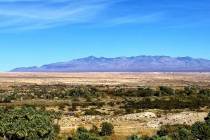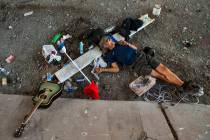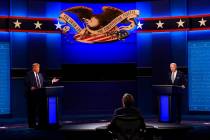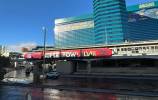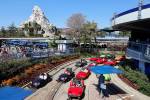Editorial: Along for the ride
The Las Vegas Monorail has had a bumpy ride since its debut in 2004. Spotty service plagued its early days and inflated ridership projections failed to materialize, as is usually the case with these projects.
In 2005, the operator threw in the towel and turned over the 3.9 mile Strip system to a private entity called the Las Vegas Monorail Corp. Five years later, the company filed for bankruptcy protection. The courts eventually trimmed the monorail’s debt by 98 percent to $13 million — leaving creditors with a handful of nothing — and allowed the company to keep its not-for-profit status under state law.
Freed from most of their financial obligations, monorail officials have expansion plans. While there has been periodic talk of building out the system to downtown or McCarran International Airport, a new proposal would extend the monorail from its southern terminus behind the MGM Grand down about a mile to the Mandalay Bay.
The cost would be a hefty $100 million.
“The reason that we are considering this is because we’re in a very healthy position as a company,” said Ingrid Reisman, spokesman for the monorail corporation. She added that snaking the system south down Koval Lane, east on Reno Avenue and on to the Mandalay Bay would “improve that position for the company.”
Indeed, the fortunes of the system have improved somewhat since its emergence from bankruptcy. Ridership increased 13 percent in 2015 to 5.1 million, up from 4.5 million the previous year. Annual revenues were up 10 percent during the same period to $22 million.
But a little perspective is in order.
Annual passenger counts remain significantly below the 7,9 million riders who used the monorail in 2007. Meanwhile, the company’s “doomsday account” — which Clark County mandated to ensure taxpayers wouldn’t be on the hook for the costs of dismantling the system, should it fail — seems relatively low at just $6 million.
Of greater significance, the company’s “healthy position” isn’t such that it can afford to undertake the expansion by raising money on its own. Thanks to its checkered financial past, any bonds the monorail company floats to generate capital must deliver high interest rates to attract investors. That would undermine the project’s financial feasibility.
Because of this, monorail officials now seek to piggyback on the Regional Transportation Commission — a conglomerate of various local governments — to raise the necessary funds. The RTC’s board on Thursday agreed to study a proposal that would allow the Las Vegas Monorail to use the agency’s credit rating to secure a cheaper interest rate for the bonds needed to raise money for the Mandalay Bay extension.
Taxpayers who foot the bill for the RTC’s agenda have every right to ask whether the agency has any business getting involved with an operation fresh out of bankruptcy that after more than a decade has yet to prove its long-term viability. Perhaps it would be prudent for monorail officials to get the company on more secure financial footing before undertaking additional projects.
“The RTC needs to really understand what the monorail is intending to do,” said Greg Gilbert, an attorney for the commission. “No rock will be left unturned if this advances.”
That’s the least taxpayers should expect.










